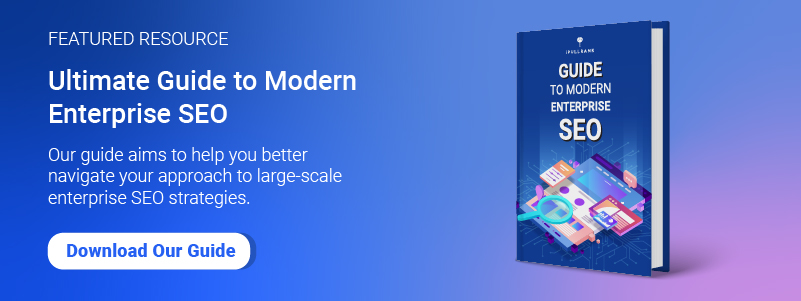TLDR:
- Google’s mobile-first indexing has companies scrambling to back away from desktop.
- However, you don’t want to toss out your desktop strategy just yet.
- Give users a seamless experience that stretches across both desktop and mobile.
- Focus on the user, and you’ll have an SEO strategy with staying power.
Google’s new “mobile-only” indexing has sent many content marketers and SEO pros running for the hills, crying, “The second coming of the Mobilegeddon is upon us! “I just KNEW that mobile-first would cause Google to abandon desktop optimization.”
Should we then repent and leave our desktop efforts behind?
Nah. Take off your tinfoil hats for a moment. Mobile-only is only the next step in Google’s “mobile-first” indexing system.
But it doesn’t – and shouldn’t – mean that you should go desktopless.
Desktop Still Has One Trick up Its Sleeve

Although statistics show that mobile traffic comprises 52.6 percent of all web traffic worldwide, and 70 percent of all the time US users spend on digital devices is on smartphones, there’s another stat that sticks out like a diamond in a pile of manure. Worldwide, the retail conversion rate on mobile devices is a mere 1.82 percent.
Compare that to the conversion rate on desktop devices – 3.9 percent – more than twice the rate on mobile devices. Ultimately, that’s what you’re going for. Conversions, hopefully, the kind that brings in the money that keeps your business running.
Although that’s only retail, that number is significant enough to spawn a spate of articles speculating on the why. Some say it’s the screen size. People want to see details they don’t have to squint to see.
Other SEO experts contend that it’s awkward to navigate among open pages on mobile. Combine that awkwardness with the difficulty of filling out complex forms on a mobile device, and you can see why desktop is a more effective option for conversions. People browse on mobile but buy on desktop.
Kinda like the reductive fifties saying, “Gentlemen prefer blondes but marry brunettes.” Mobile is great for flirting with a brand, but when it comes to your bottom line, desktop takes the lead.
But you’ve gotta flirt with a lot of prospects before you settle. Hence, Google’s decision to go mobile-first.
What Exactly Is Mobile-Only?
Traffic Think Tank’s Patrick Hathaway put it this way: “’Mobile-first’ actually means ‘mobile-only.’” In other words, Google “will only use mobile Googlebot to crawl and index your website.”
Ready or not, here it comes: Google mobile-first indexing. Yes, with the new mobile index, search results might change.
But wait. Desktop crawls still occur. And what they reveal is a wild disparity between the internal links they index versus those that show up on mobile-first indexing. Even more alarming, the word counts don’t match.
Here’s some advice. It’s your choice, but you can rest assured that a solid SEO and content strategy will steer you through any changes Google makes now or in the future.
As Fajr Muhammad observed almost three years ago, six elements characterized an effective SEO strategy:
- Mobile-first
- Structured data that readers and bots can extract easily
- Speed
- Targeted content
- Authoritative content and reputation
- Integrative search elements, all working together
I’ve got news for you. Most of that hasn’t changed since 2018.
Mobile-First
Yes, your site should offer users a seamless experience on mobile devices. However, I’d contend that that seamless experience should carry over into your desktop presence as well.
Structured Data
Structured data that you can pull out easily have always been relevant. Before bots got fancy and pulled data out for Position Zero and rich snippets, human eyes and bots alike have sifted through information to find what they needed. Those sites that structured content to scan easily landed on top, provided the other factors were equal.
Using Schema.org, a vocabulary extension that all the major search engines recognize, allows you to highlight key information through a special type of computer code called “mark-up language.” Using this code allows you to single out vital information and showcase it right on the search results. These bits of information–rich snippets – allow readers to find what they’re looking for quickly, driving clickthroughs to your website up by anywhere from 10 to 15 percent.

In the example above, rich snippets include the time it takes to cook the dish, as well as the calories per serving, all important information for post-Thanksgiving cooks who want to save time for Black Friday shopping and lose some of that holiday weight they gained.
Speed
Speed has been a factor since websites appeared on the scene, as Aleks Shklyar points out. Agreed, Google didn’t make it part of its *official* ranking factors until 2010. But even before that, slow loading speed certainly dinged a site’s traffic when it took an eternity to load. People simply clicked away.
But today, speed is just as critical for desktop as it is on mobile. Google’s PageSpeed Insights still provides desktop analytics. And it all relates back to user experience.
Whether for desktop or mobile, Google’s Core Web Vitals provides SEO teams with guidelines for specific “quality signals” around user experience. They include loading time, how long it takes users to interact with it, and a metric that measures changes in a page’s layout.
Page speed, user engagement, and a consistent environment between pages on mobile and desktop all affect user experience. Combine that with killer content that exceeds all their expectations and zaps away their pain points, and your site will perform no matter what Google does next.
Targeted Content
Although today’s AI-driven technology allows us to laser focus on content for specific audience segments, it’s always been a must to identify the people most likely to buy your products and services – your customer personas. Aligning your content with these personas and with search engines’ expectations is essential to your success.
Authoritative Content and Reputation
Similarly, authoritative content and a brand’s reputation have always mattered. Yes, early on, people gamed the system with keyword stuffing and black-hat tactics. However, when people landed on their site and discovered a pile of verbal fluff, they left as soon as they came.
But today, authority is all about your links. When other reputable sites link to your content, it shows that people who are experts in your industry or a related field think your content is trustworthy. Similarly, when you demonstrate mastery of your field by supporting your claims with information gleaned from reputable sources, search engines recognize that your post is a serious treatment of its topic.
Integrated Search Elements
And yes, all the SERP elements should work in harmony with each other in a smooth integration. Using paid and organic search together in a logical, data-driven approach will drive the right audiences to your owned content.
The little nugget all the SEO geeks don’t quite grok in all their zeal for Google’s latest shiny toy is this: Put the user in the center of your SEO and content strategy, and you’ll come out on top in the long run.
Put Users in the Center of Your Desktop and Mobile Content Strategy

It’s about user-first, not mobile-first.
User experience, including design, should be seamless across both mobile and desktop. Unfamiliar territory works well for adventure flicks. Not so much with web content.
People want to feel like your website is familiar ground. Like home, only a lot more informative.
That’s why it’s essential for you to provide the same look on both mobile and desktop versions of your website. And, it should perform the same no matter what size screen your users have.
Then, on the front end, fill it with content that your audience can’t wait to dive into. Now, if content and search optimization aren’t your things, we can free your hands of those tasks while you do what you do best. Shoot us a message to discover what we can do for you!








